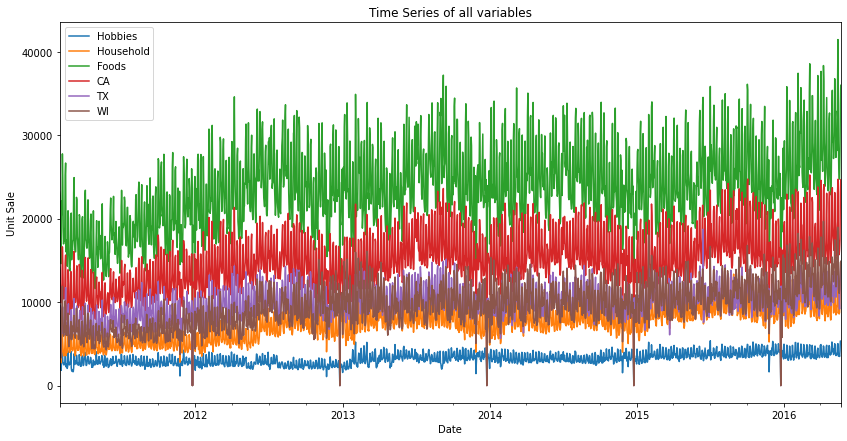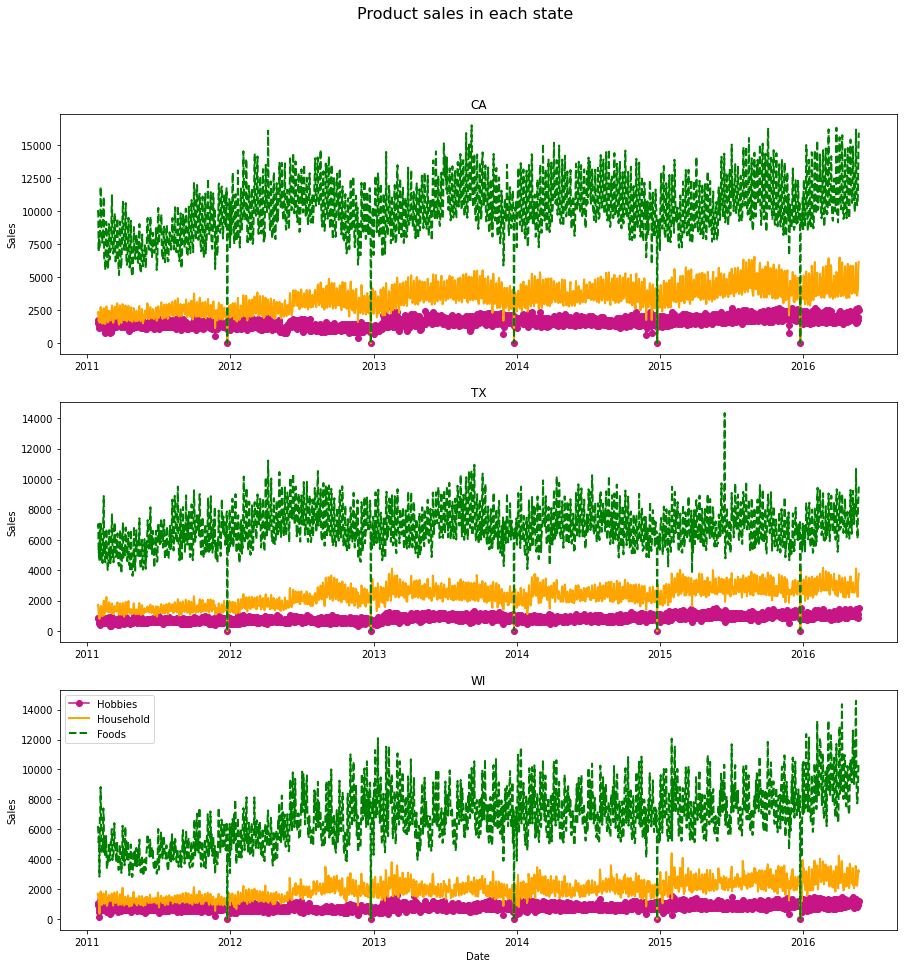After having explored this huge dataset, I wanted to explore with more of time-series components to understand the distribution much better. So, lets dive in.
- For Initial Data Exploration of this data, please read here - PART-I
EDA – TIME SERIES
TIME SERIES
- After exploring products, prices, stores and states, lets explore how those variables will span across the time.

- The above images shows us the time variation of three states and three products.

- A detailed visual of the products time-series across the three states. The drop to zero in the above plots is on Christmas Day as the stores are closed. The spikes of foods are on SNAP days in the respective states.
TOTAL PRODUCT SALES IN EACH STATE
- A time-series visual, plotting the demand for all products in each state. WI and TX appear to be having similar demand as the year progresses to 2016 whereas, CA has been consistent with small increments over the years.
- We can also see occasional spikes, highest in a year, and nill at the end of the year. This might be due to some states having SNAP days or other festival events. The nill demand is due to the closure of marts on Christmas days.
You can toggle over the graph and select any area by drawing on the visual above and get more insights.
PRODUCT SALES IN ALL STATES
- Now let us see another time series visual. Here we are plotting the demand of products combined across all three states. As said in the previous post, we infer that the food product categories having been selling higher, then comes the household products and hobbies products respectively. We can easily infer this as people need more food products than compared to household and hobbies products. As mentioned earlier, we see occasional spikes, highest in a year especially in foods and not much in other products and nill at the end of the year. This is due to some states having SNAP days or other festival events. The nill demand is due to the closure of marts on Christmas days.